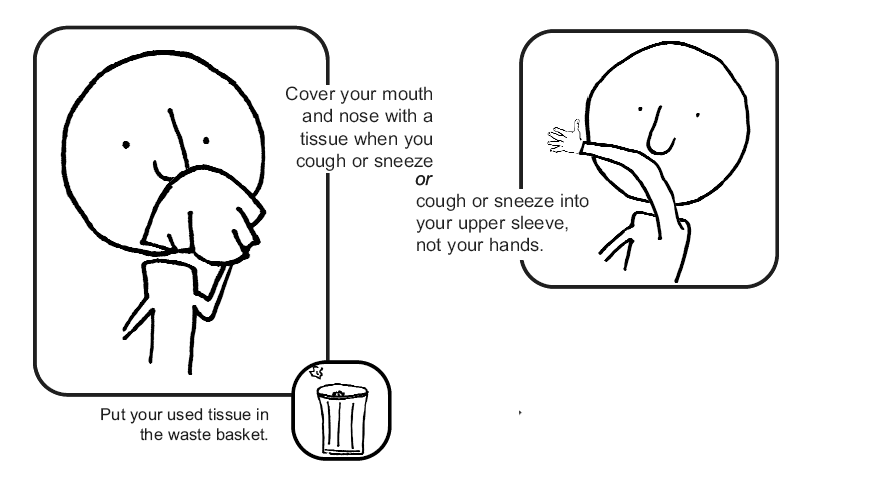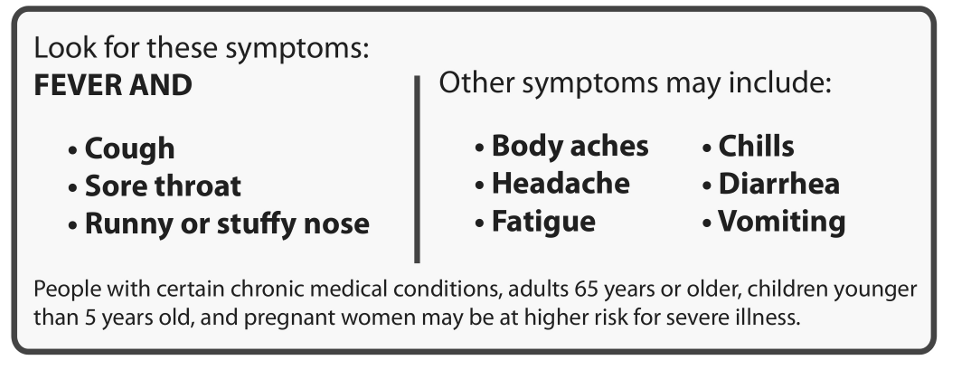Booklet/Health
Copied from 2009
We are going to cycle through South Eastern Europe in the two hottest months of the year. Probably no-one needs to explain you that you have to be careful with too much direct sun exposure, so we won't.
But do be careful! When writing this guide, we don't know exactly if we are going to have participants who have a bit experience with first aid. If you are such a person, please make yourself known, for example in the morning circle.
It might be a useful idea to make a list with the blood type of each participants, if you know this, just as a precaution.
One issue where some people are concerned about is the H1N1 Swine flu. Certainly in remote regions. Briefly we considered to buy Tamiflu in advance, but well, after a brief discussion we didn't. But for everyone’s pleasure, we add a scrap of information of the American CDC.
Copied from 2011
Sunstroke
Sunstroke (heatstroke) is an acute, life-threatening condition in which the body's heat-regulating system fails, due to prolonged exposure to high temperatures, excessive production of heat or commonly a combination of the two. The body is unable to lose heat adequately in order to return to its normal temperature. Body temperature rises to very high levels, which can damage major organs. Sunstroke can also be preceded by heat exhaustion, when excess loss of fluids and salt in sweat results in marked weakness. Symptoms of sunstroke include elevated body temperature; hot, dry skin; hyperventilation; mental confusion; and eventual unconsciousness.
How to get rid of sunstroke
First treatment is to lower the body temperature rapidly in a controlled fashion.
1. Get out of the sun! 2. Remove the person's clothing and immerse the body in a cold water bath. If this is not possible, cover the body with a wet sheet or towels, sponge down the body with cool wateror rub the limbs with ice-cubes. If your water supply is limited, cooling the head and neck becomes the priority. Place ice packs (if available) at the neck, armpits and groin. Fan the person with a newspaper, towel or electric fan to increase air flow and evaporation. 3. Remove any extra clothing like a hat or shoes and socks to aid in the cooling process. 4. Lie down and put a cool, damp cloth over your forehead. Raise your feet a few inches to avoid potential shock. 5. Elevate the feet to direct blood back toward the head. 6. Massage the extremities (arms and legs) to encourage the return of cool blood to the brain and the core of the body. 7. If the person is conscious, encourage him or her to sip water or a soft drink. If the mental state is impaired, it may be impossible to get the person to drink. Continue with external cooling in the hope that the person will recover sufficiently to begin drinking. 8. While cooling the body down, take the person's temperature every 10 minutes and do not allow it to fall below 38.5°C. Only immerse the person in a cold bath until their temperature falls to 39.4°C. If you don't have a thermometer, continue with first aid until the body feels cool to the touch. Resume cooling if the body starts to heat up again. 9. If flu-like symptoms persist, go see the doctor immediately.
When to call the doctor
Sunstroke is a medical emergency. Seek immediate medical help if you or someone else develops any of the following heat-related symptoms:
- Confusion
- Extreme fatigue
- Agitation
- Intense muscle aches, feverishness or nausea
- Convulsions or loss of consciousness
Sunstroke can be prevented: drink plenty of water & avoid overtaxing the body in hot weather and while exercising (See tips on the opposite page)
First aid kit
We don't want to replace your doctor/pharmacist, but just be sure you are aware about the health necessities you could have during the Biketour. If you have any specific health problem (like an allergy) be sure to have with you the drugs/remedies you might need.
A basic first aid kit includes:
- Painkiller – analgesic
- disinfectant
- Laxative
- fever reducer
- Mosquito repellent
- Anti-inflammatory painkillers
- anti-diarrhea tablets
- Roller bandage
- Oral rehydration salts
- Antihistamine
- medicated plaster
- Non-mercury thermometor
- Throat disinfectant
- Digestive
Tips
- Drink water before you even get thirsty and drink more than you need to satisfy your thirst - particularly if you've been sweating. You can integrate the salt lost through sweating by putting some kitchen salt and lemon in the water.
- Rest during the hottest part of the day, and go in the shade when you need to.
- Eat lots of fruits/vegetables : bananas, nuts, cacao, legumes, cereals, potatoes, vegetables, fibre to integrate Mg , K , vitamines and proteins you need to cycle.
- Wash your hands thoroughly before cooking or washing up
- Be sure to have an helmet, cap or hat to be protected from the sun
- Wear light-coloured, loose-fitting, breathable lightweight clothing in hot weather. Cotton is best, as it allows air to pass through and sweat to evaporate.
- Eat light, small meals, and limit alcohol intake in hot weather. Avoid alcohol before, during, and immediately after exercise. Alcohol causes you to lose more fluid than you consume.
Copied from 2012
Herbal First Aid Kit
Aloe vera gel: used for a wide variety of skin problems, including burns, sunburns, itching, and dry skin; used as a substitute for triple-antibiotic gel to keep a wound moist and prevent bandages from sticking
Lavender essential oil: good for mosquitos, horsefly, spiders bite, minor burns (and sunburn), jellyfish irritation, headaches, congestion
Tea Tree Essential Oil: excellent antibacterial, antifungal, deodorant, congestion, achy muscles, insect repellant, cuts and abraisions, warts and cold sores, toothache
Grapefruit seed extracts: natural antibiotic, excellent antibacterial, antifungal, antiseptic.++++ Good for external/internal use, based on the kind of formulation.
Propolis tincture: natural antibiotic, good for fever, sore throat, wounds
Sage: good to prevent excess sudoration
Arnica salve: optimum in case of contraction of a muscle, bruise, contusion.
Eye drops eufrasia/eyebright: analgesic, disinfectant.
Charcoal: good in case of diarrhea, stomach problems.
To prevent mosquito bites: neem oil or citronella
Bicarbonate: disinfectant for skins, fruits and all surfaces. Natural deodorant too!
St Johns Wort Salve: cuts, wounds, burns, sunburn
St Johns Wort Oil: burns, swelling, pain, bruises, sunburn, achy muscles, cuts, wounds
St Johns Wort Tincture: burns, pain, nerve damage, depression, anxiety
Calendula Salve: antifungal for cuts, wounds and burns
Echinacea Tincture: colds, flu, infection, weak immune system
Eucalyptus Essential Oil: congestion, achy muscles, insect repellent, cuts, abraisions, warts and cold sores (dilute with a carrier oil ie.olive)
Garlic/Mullein Oil: ear infections, parasites, colds
Green Clay Powder: splinters, wound disinfectant, poltice for skin infection
Liquorice Root Tincture: sore throats, broncial infection, herpes I & II
Peppermint Essential Oil: digestive problems, mouthwash, stimulant (use internaly diluted and with care)
Rescue Remedy (DR BACH): trauma, emotional and physical, internal and external
Valarian Tincture: pain, insomnia, stress and nervous tension, achy muscles.

